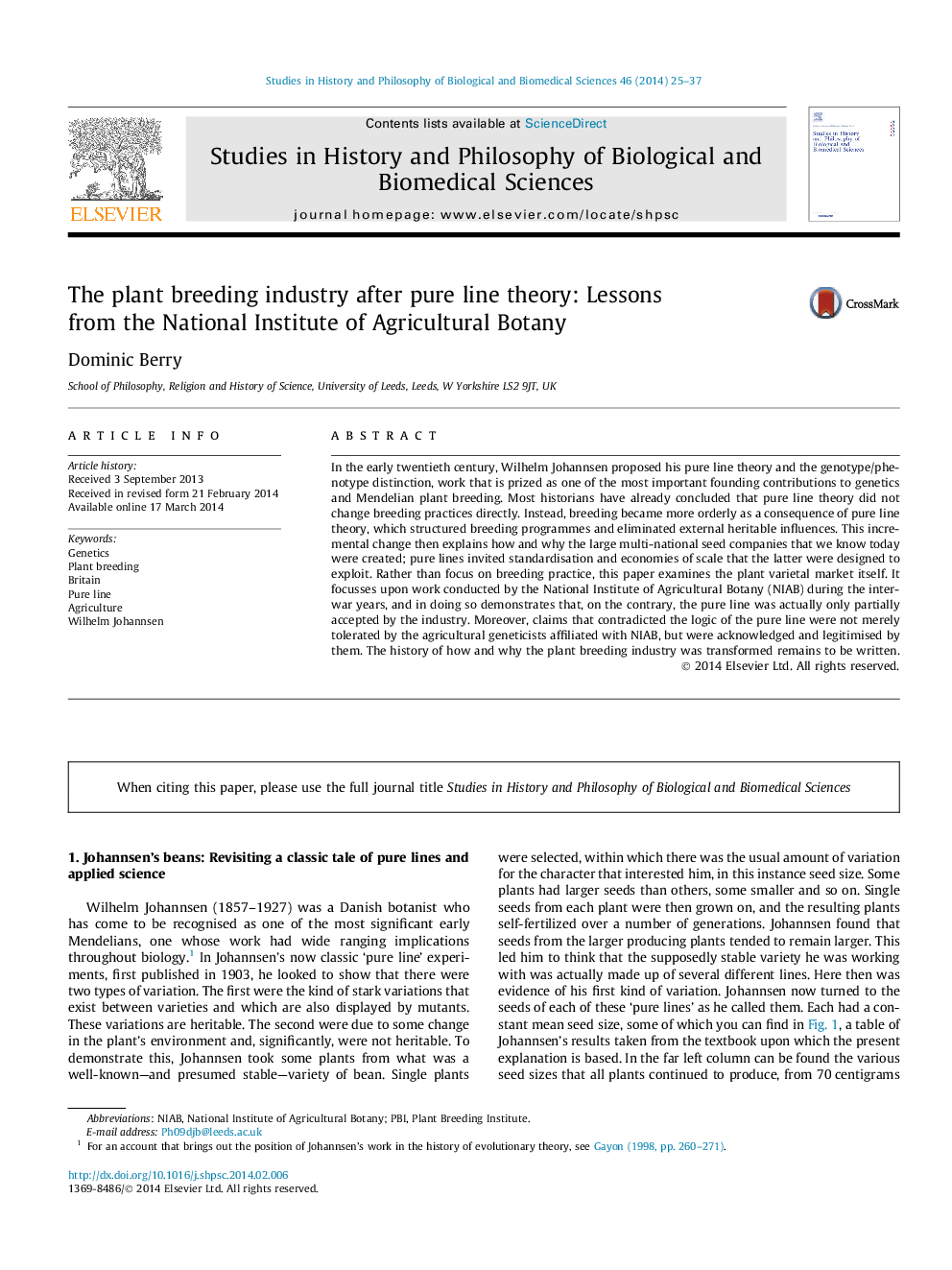| کد مقاله | کد نشریه | سال انتشار | مقاله انگلیسی | نسخه تمام متن |
|---|---|---|---|---|
| 1161808 | 1490521 | 2014 | 13 صفحه PDF | دانلود رایگان |
• Synonymous plant varieties need not only be interpreted as instances of fraud.
• The logic of pure line breeding did not become preeminent prior to WW2.
• This logic’s eventual growth was due to factors other than genetics.
• Agricultural geneticists acknowledged and legitimised non-pure line practices.
• They cooperated in a culture that recognised much more than merely genetic novelty.
In the early twentieth century, Wilhelm Johannsen proposed his pure line theory and the genotype/phenotype distinction, work that is prized as one of the most important founding contributions to genetics and Mendelian plant breeding. Most historians have already concluded that pure line theory did not change breeding practices directly. Instead, breeding became more orderly as a consequence of pure line theory, which structured breeding programmes and eliminated external heritable influences. This incremental change then explains how and why the large multi-national seed companies that we know today were created; pure lines invited standardisation and economies of scale that the latter were designed to exploit. Rather than focus on breeding practice, this paper examines the plant varietal market itself. It focusses upon work conducted by the National Institute of Agricultural Botany (NIAB) during the interwar years, and in doing so demonstrates that, on the contrary, the pure line was actually only partially accepted by the industry. Moreover, claims that contradicted the logic of the pure line were not merely tolerated by the agricultural geneticists affiliated with NIAB, but were acknowledged and legitimised by them. The history of how and why the plant breeding industry was transformed remains to be written.
Journal: Studies in History and Philosophy of Science Part C: Studies in History and Philosophy of Biological and Biomedical Sciences - Volume 46, June 2014, Pages 25–37
